The Prado Museum has reviewed almost 27,000 painting files on its website and some 1,800 posters of pieces exhibited in its rooms to eliminate the term “disabled” and certain physical references of the characters in its works. In this way, museum sources explain, they fulfill “the social and cultural role of being an example when a political consensus is reached that becomes the norm.” That is to say, the Prado is anticipating the approval, foreseeably between January 16 and 18, of the reform of article 49 of the Constitution by which the term “disabled” will be eliminated and replaced by “people with disabilities.” , in compliance with the agreement reached on December 22 by the President of the Government, Pedro Sánchez, and the leader of the PP, Alberto Núñez Feijóo.
The first changes – in use, remember that it is a process in development – have been made in eight posters that the Documentation team led by Ana Martín has considered did not adapt to the constitutional change.
Two clear examples.
Prince Don Carlos, by Alonso Sánchez Coello
In the text on the sign where it said: “… to cover up the deformation of his back.” She now simply says: “…to cover his back.” In this case, a reference to a physical appearance that did not provide further information about the person portrayed has been eliminated.
National Prado Museum
Brígida del Río, the bearded woman of Peñaranda, by Juan Sánchez Cotán
Where it said: “… works that record the parascientific and morbid interest in what is abnormal or deviant from nature…”. It already reads: “… works that demonstrate the parascientific interest of their nature…”.
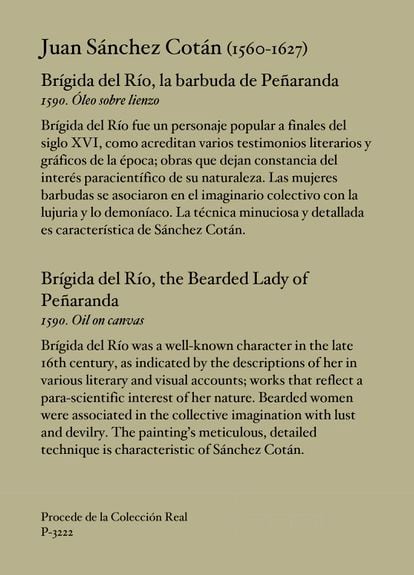
The term dwarf and its derivatives are an example of the complexity of the task that the Prado faces. When typing this word in the museum's search engine, 61 results still appear only for paintings hanging in its rooms or stored in its warehouses. In some cases, it is the title of the work, which cannot be modified if it is “historical,” they explain in the art gallery. They give as an example Aunt Gila's faggotan engraving whose name Goya himself wrote by hand. Prince Felipe and the dwarf Miguel Soplillo and Portrait of a dwarf Yes, they have been changed: in the first case, eliminating the adjective Miguel Soplillo; in the second, it has been replaced by jester.
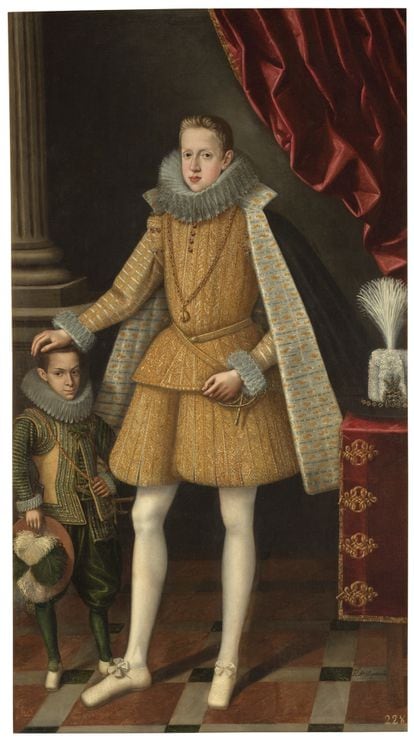
National Prado Museum
“We have had a failure on the server and the changes we had made have not been loaded, this Thursday they should appear,” the same sources point out to try to explain, for example, the case of Eugenia Martínez Vallejo, dressed, by Juan Carreño de Miranda. The text of the banner has been modified. Where it said: “…To leave a memory of the phenomenon, two portraits were commissioned from Carreño. The one who shows her without clothes highlights the deformity through a game…” Now it says: “… To remember his appearance, two portraits were commissioned from Carreño. The one who shows her without clothes highlights his physique through a game…” But when searching the file on the Prado website A reference to the term “dwarf” continues to appear, specifically, about the painter's work: “After the death of Velazquez, Carreno (1614-1685) was revealed as his most legitimate successor in the representation of the jesters and dwarfs that swarmed the Spanish court.” The same does not happen with the piece Eugenia Martínez Vallejo, naked, in which this word no longer appears either on the card or on the card.
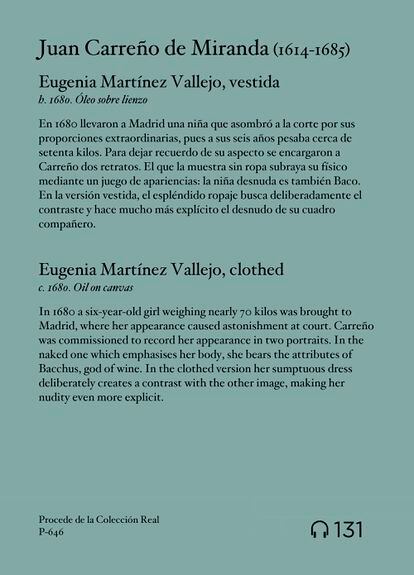
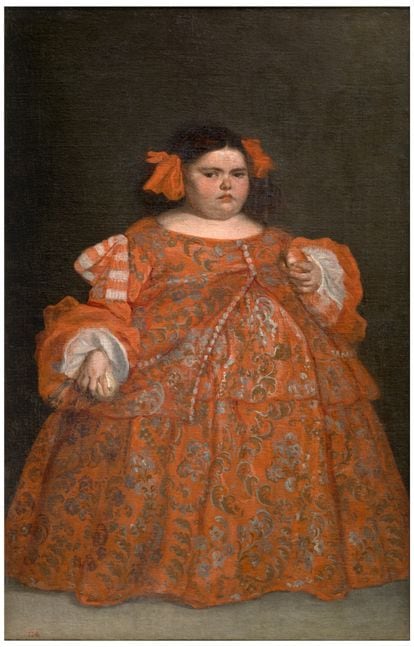
In the case of The Child of Vallecas, by Diego de Velázquez, the change has been made. In the text of the poster where he said: “In addition to dwarfism he suffered from 'cretinism with oligophrenia'…”. He now says: “…In addition to achondroplasia he suffered from 'cretinism with oligophrenia'…”.
In the file that appears on the website you can read that “Francisco Lezcano was a native of Vizcaya. […] In addition to his achondroplasia, he was appreciated for his intellectual disability, which has been diagnosed as cretinism with oligophrenia. He is defined as part of “the large group of jesters and people with disabilities who populated the Spanish court since the 16th century, and who with their physical and mental disabilities, their strokes of genius and their misfortunes entertained the leisure of a society convinced that Each individual played a specific role in the world.
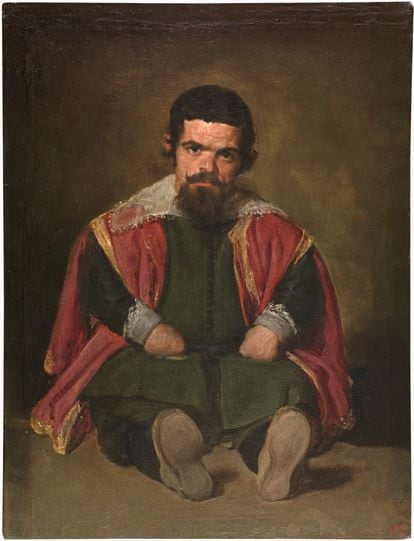
In The jester the cousin, also by Velázquez, the modification on the cartouche remains as follows. From: “…this is one of Velázquez's portraits of dwarfs in which there is a relationship…”. A: “…this is one of Velázquez's portraits in which there is a relationship…”. The file describes that it is a “seated portrait, with the legs towards the viewer, underlining the short stature of the character, covered in clothing with rich colors, in which the reds and greens stand out.”

A work that continues
Javier Portús, head of Conservation of Spanish Painting until 1800 at the Prado, proposed on the same Wednesday morning to those responsible for the museum other possible changes that affect the rooms and that the art gallery assures that they will be carried out this Thursday. For example, the general poster for 15 is currently titled: Velázquez: dwarfs and jesters, and the expert suggests that it be replaced by Velázquez: the jesters. Portús also advises that the cartouche of the painting Jester with books which says: “One of the palace dwarfs poses with an open book whose large dimensions emphasize its smallness”, goes on to specify: “One of the palace jesters poses with an open book whose large dimensions serve to establish a game of scales” .
And add another case: the painting Paul of Valladolid now it is explained with the phrase “He was part of the staff that was then known as 'pleasure man', and which included dwarfs, madmen, jesters, etc.” Portús proposes: “he was part of the staff who was then known as 'man of pleasure', and who were an important part of the courtly social landscape.”
All the culture that goes with you awaits you here.
Subscribe
Babelia
The literary news analyzed by the best critics in our weekly newsletter
RECEIVE IT
Subscribe to continue reading
Read without limits
_
#39El #Niño #Vallecas39 #Velázquez #longer #dwarfism #achondroplasia #Prado #adapts #reform #Constitution